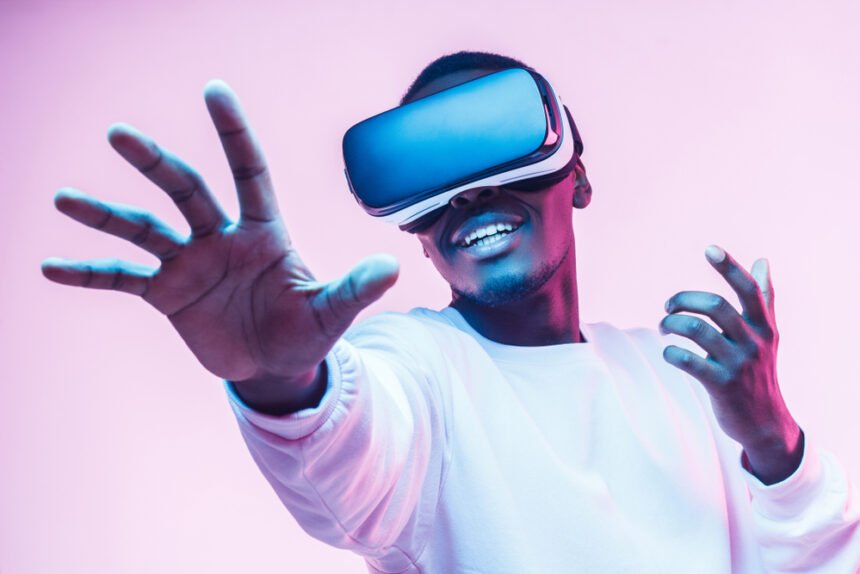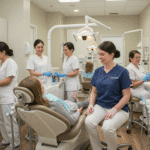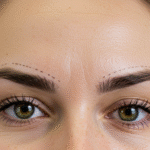Vision problems are becoming more prevalent every day. A huge part of this is due to the fact that the population is aging. Other factors include poor diet, extended screen time and other lifestyle changes that leave us less healthy. As a result, an estimated 7.2 million people will suffer blindness or low vision by 2030.
The good news is that new advances in technology are helping overcome some of the vision problems affecting many Americans. Virtual reality is a gamechanger that can help optometrists gauge the vision of their patients and offer better care.
Virtual Reality Can Help Optometrists Help People with Vision Problems
To most onlookers, it might appear like the field of optometry hasn’t advanced much in the past few years. In reality, though, this really isn’t the case. Lots of new technology has been both created and adapted to fit into the field, and practitioners have started to take advantage of this fact! They are looking for various solutions to treat the various causes of vision loss and VR can be a lifesaver for their patients.
One of the prime examples of this is virtual reality. These headsets go by a few names, be it VR, AR, augmented reality, or the titular virtual reality. For a long time, as you can read about in this article, we mostly applied VR and/or AR to video games. That’s the context in which most folks are familiar with it, at least.
Nowadays, though, we’ve started to apply it to a ton of other things as well. As you can probably guess, one of those things is medicine. In particular, it’s been an invaluable asset for eye doctors (optometrists) in the past few years. However, it’s still not a technology that many of them are familiar with.
So, if you’re looking to give your practice a boost, you might benefit from learning about these VR devices that can be used in field vision testing. Make sure to stick around if that’s the case!
How Does it Work?
Now, this is probably the biggest question that we tend to see when it comes to using VR in this manner. After all, it’s hard to imagine that the same tech that we use to create video game environments can be used for eye doctors! However, when you get down to it, it’s rather ingenious.
It comes down to the development of the virtual reality visual field test, which is a method of testing a person’s peripheral vision. For those unfamiliar, that’s just how well someone can see out of the corners of their eyes. These tests can be used for a bunch of purposes, though, beyond just that.
For the most part though, it’s intended to help people to find their “blind spots.” This is especially critical for people who have poor vision in the first place. So, what’s the upside of using a VR set for this sort of test?
With the traditional type, it can be hard for people who have glasses to get an accurate gauge of what their blind spots are. That’s the real downside of the visual field test. However, when done in virtual reality, that isn’t nearly as much of a problem. After all, given the fact that the virtual reality field will entirely encompass the patient, there won’t be as much room for error.
Really, though, that’s the gist of how it works – it’s pretty simple in practice and can make a huge difference for patients. Being able to get a better set of glasses or know their eyes better is a big deal for most of them, after all. Of course, providing better results as a physician is also a good thing.
Is it Worth it?
The other question that most optometrists and physicians end up having is whether or not such an expensive piece of equipment is really worth it. In the scheme of things, though, the thing about the VR field vision test is that it’s not truly that pricey. Additionally, as you get more use out of it as a physician, it’ll end up paying for itself. It will be something people look for when seeking an optometrist.
How does that work, though? Well, you can read a bit about it here: https://www.webmd.com/eye-health/what-is-the-visual-field. A lot of patients who visit will want to have this procedure done. Whether it’s paid for out-of-pocket or by their insurance, at the end of the day, you’ll be the one making the income generated by the improved test.
The better sorts of equipment that you have in your practice, after all, the more patients will want to come for their visits. It’s a way to both attract new customers and to retain ones that you already have. Demonstrating that you can evolve with the times may not seem like the biggest deal, at first, but you may be surprised by how impactful it can be on retention rates.
Beyond that, though, there’s a certain appeal to this sort of technology as well. Virtual reality has taken the world by storm for good reason, right? It’s practical, of course, but it’s also quite fascinating for patients and practitioners alike. So, bringing it into your medical practice can stir up some buzz and attention as well.
Just How Practical Is it, though?
There are certainly valid concerns to be had here in terms of how the physical device works. Something like recharging is something to consider, as well as whether or not the device needs to be hooked up to internet to function. In the case of most virtual reality field vision testers, they won’t need to be connected to wi-fi to operate. So, that’s not going to be a worry.
Additionally, they don’t take up much space in an office setting. Because they’re easy to carry and move around, too, it means that it can just be moved between each of the different rooms in which you and your fellow physicians are seeing patients! They make the exams a lot faster, too, so it’s saving you some hassle there.
If you still have doubts, that’s understandable. However, seeing as this sort of tech can help you to see more patients in a day and to do so quickly, it’s hard to say that you won’t get a return on investment. Now, while learning this sort of new methodology might be intimidating, most of the time it’s really not that difficult to understand the techniques.
More than likely, there will be plenty of instructional booklets, manuals, and potentially even video content as well. There’s not a huge risk of being left to fend for yourself, there, and it should be similarly easy to train other physicians and assistants in how to use one too. The positives seem to outweigh the negatives, that’s for sure.







